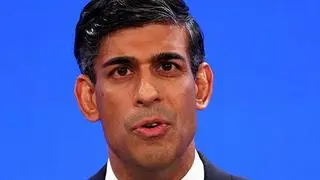Russia has offered India technology for building and operating floating “low power” nuclear power generation projects. This has been revealed in a press release of the Russian state-owned nuclear power company, Rosatom, issued in the context of the the meeting of Ajit Kumar Mohanty, Chairman, Atomic Energy Commission and Alexey Likhachev, Director General, Rosatom, in Russia on Thursday.
Russia has also offered “serial construction of the Russian-designed, land-based nuclear power units at a new site in India,” as well as cooperation in nuclear fuel cycle. Also mentioned is “non-power applications of nuclear technologies.”
“Alexey Likhachev and Ajit Kumar Mohanty also discussed the progress of the joint Kudankulam Nuclear Power Project being constructed as per the Russian design in India, comprising six power units equipped with light-water reactors, each of 1,000 MW capacity,” the release said.
Proryv project
Indian nuclear industries visited the site of the Pilot Demonstration Energy Complex (PDEC) being built in Seversk, Tomsk region, as a part of “Proryv” (“the Breakthrough”) strategic industry project.
While talks on land-based, large nuclear power plants is a matter of routine, the reference to floating nuclear power plants is significant. There is growing interesting in ‘small modular reactors’ (SMR), including in India, and some SMRs could be ship-mounted. Russia operates the world’s only floating nuclear power plant, onboard the ship Akademic Lomonosov, which is stationed at the Arctic port of Pevek.
At an IAEA symposium on floating nuclear power plants that took place in Vienna on November 14 and 15, 2023, legal experts, nuclear and maritime regulators and industry leaders discussed the benefits and challenges of FNPPs and exactly what role they could play in the fight against climate change and the transition to Net Zero.
‘Active consideration’
An IAEA press release after the event quoted the agency’s Director General, Rafael Mariano Grossi, as saying, “there is active consideration of floating nuclear power plants”.
Safeguards and the international legal and regulatory implications needed to be thoroughly analysed, Grossi said. “Nuclear energy has already been in use for about 60 years in naval ships and icebreakers propulsion. However, FNPPs are different since they will produce low-carbon power and heat for different applications, including district heating, desalination and hydrogen production, the release said.








Comments
Comments have to be in English, and in full sentences. They cannot be abusive or personal. Please abide by our community guidelines for posting your comments.
We have migrated to a new commenting platform. If you are already a registered user of TheHindu Businessline and logged in, you may continue to engage with our articles. If you do not have an account please register and login to post comments. Users can access their older comments by logging into their accounts on Vuukle.